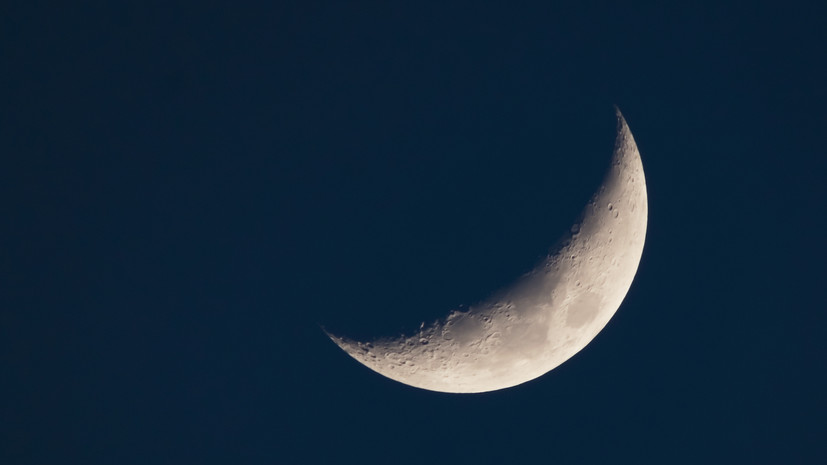Scientists from GEOHI RAS have put forward an alternative to the popular theory of the origin of the Moon as a result of the impact of another celestial body on the Earth. Experts have made a number of arguments and used a computer model that proves that the Moon and the Earth were formed simultaneously from a gas-dust cloud and developed in parallel. This was reported to RT in the press service of the institute. The results of the study are published in the collection Advances in Geochemistry, Analytical Chemistry, and Planetary Sciences published by Springer Nature.
There are many theories of the origin of the natural satellite of the Earth - the Moon. According to the most popular shock formation hypothesis, the Moon arose as a result of the collision of a young Earth with another protoplanetary object similar in size to Mars. A piece of the mantle broke off from the Earth, which later formed as a separate celestial body depleted of iron, water and gases.
However, there is another model, according to which the formation of the Moon and the Earth occurred simultaneously from a common gas-dust cloud. The author of this theory is the Soviet geochemist, academician of the Russian Academy of Sciences Erik Galimov. Back in the 1970s, together with colleagues from GEOHI RAS, he studied the chemical composition of lunar soils delivered by the Luna-20 and Luna-24 space stations. Then the scientist noticed that the chemical composition of oxygen and a number of other elements of the rocks of the Moon and the Earth coincides, which does not correspond to the model of mega-shock, since the substance of the Moon should have inherited the isotopic composition of the impacted body. Eric Galimov died in 2020, but their GEOHI colleagues continued to look for new scientific evidence in favor of the theory of the origin of the Moon put forward by him.
- Formation of the Earth and the Moon from a common gas-dust cloud: numerical modeling (together with A.M. Krivtsov)
- © GEOHI RAS
The new study produced new cosmochemical data and developed a computer model that showed that under certain conditions, the Moon and Earth could indeed have formed from cosmic matter that was at the same distance from the Sun in a protoplanetary cloud.
As the authors of the work noted, at the initial stage, both planets were two protoplanetary clumps, which at the beginning of development were depleted of chemicals. However, at some point, one of the fragments that was larger in size (the future Earth) began to grow and attract most of the protoplanetary matter. As a result, the smaller (future Moon) slightly changed its composition and stopped in development.
According to scientists, for a detailed study of the theory of the origin of the Moon from a gas-dust cloud, it is necessary to build a more detailed model of the processes occurring in the protoplanetary disk, which will include an assessment of changes in temperature and pressure in time and space.
The new data could help in the study of exoplanets with a similar development model, and they could also be used in the search for and extraction of minerals from the moon.

